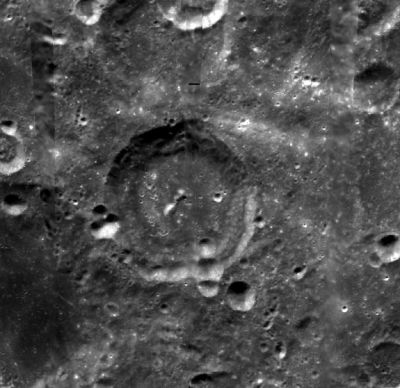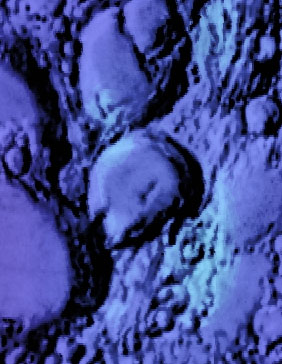Difference between revisions of "Boyle"
| Line 16: | Line 16: | ||
''([[LAC%20zone|LAC zone]] 132B4)'' [http://planetarynames.wr.usgs.gov/images/Lunar/lac_132.pdf USGS Digital Atlas PDF]<br /> <br /> | ''([[LAC%20zone|LAC zone]] 132B4)'' [http://planetarynames.wr.usgs.gov/images/Lunar/lac_132.pdf USGS Digital Atlas PDF]<br /> <br /> | ||
==Description== | ==Description== | ||
| − | '''Boyle''' is a crater of the [[Stratigraphy|pre-Nectarian]] period (~ 4.6 to 3.92 bn years), and lies very close to the central region (54.2S, 168.7W) of the [[South%20Pole-Aitken%20Basin|South Pole Aitken Basin]] -- a 2500 kilometre-wide basin created during the same period. The crater looks relatively fresh for its age -- displaying a sharp-ish rim all around, but whose southern parts have experienced a series of bombardment. An obvious-looking groove running from the crater's eastern rim right along towards the south-west section has formed between landslided material and a once terrace. Is the unusual-looking groove, perhaps, the result of natural slumping afterwards between the two contact points, or, have subsequent impacts in the region played, in part, a role, causing the clump of material to slide inwards further onto '''Boyle's''' floor?<span class="membersnap">- | + | '''Boyle''' is a crater of the [[Stratigraphy|pre-Nectarian]] period (~ 4.6 to 3.92 bn years), and lies very close to the central region (54.2S, 168.7W) of the [[South%20Pole-Aitken%20Basin|South Pole Aitken Basin]] -- a 2500 kilometre-wide basin created during the same period. The crater looks relatively fresh for its age -- displaying a sharp-ish rim all around, but whose southern parts have experienced a series of bombardment. An obvious-looking groove running from the crater's eastern rim right along towards the south-west section has formed between landslided material and a once terrace. Is the unusual-looking groove, perhaps, the result of natural slumping afterwards between the two contact points, or, have subsequent impacts in the region played, in part, a role, causing the clump of material to slide inwards further onto '''Boyle's''' floor?<span class="membersnap">- JohnMoore2</span><br /> <br /> |
==Description: Wikipedia== | ==Description: Wikipedia== | ||
[http://en.wikipedia.org/wiki/Boyle_(crater) Boyle]<br /> <br /> | [http://en.wikipedia.org/wiki/Boyle_(crater) Boyle]<br /> <br /> | ||
Latest revision as of 20:03, 16 April 2018
Contents
Boyle
| Lat: 53.1°S, Long: 178.1°E, Diam: 57 km, Depth: km, Rükl: (farside) | |
Images
LPOD Photo Gallery Lunar Orbiter Images Apollo Images
Maps
(LAC zone 132B4) USGS Digital Atlas PDF
Description
Boyle is a crater of the pre-Nectarian period (~ 4.6 to 3.92 bn years), and lies very close to the central region (54.2S, 168.7W) of the South Pole Aitken Basin -- a 2500 kilometre-wide basin created during the same period. The crater looks relatively fresh for its age -- displaying a sharp-ish rim all around, but whose southern parts have experienced a series of bombardment. An obvious-looking groove running from the crater's eastern rim right along towards the south-west section has formed between landslided material and a once terrace. Is the unusual-looking groove, perhaps, the result of natural slumping afterwards between the two contact points, or, have subsequent impacts in the region played, in part, a role, causing the clump of material to slide inwards further onto Boyle's floor?- JohnMoore2
Description: Wikipedia
Additional Information
Nomenclature
Robert; British natural philosopher, chemist (1627-1691).
LPOD Articles
Bibliography

